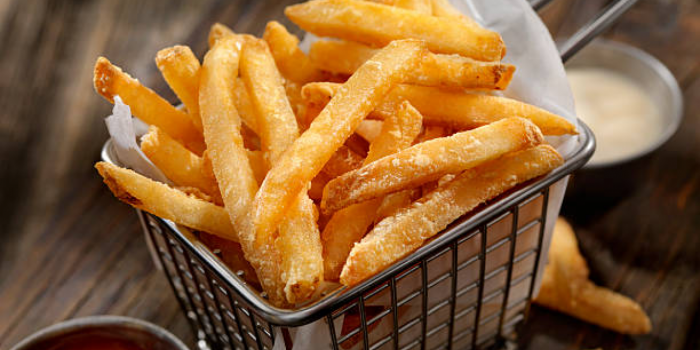Frying food is a simple yet scientifically intriguing task on Earth, thanks to the influence of gravity. However, the absence of gravity in microgravity environments poses a challenge for frying, resulting in less-than-ideal results. Nevertheless, a team of scientists from Greece’s University of Thessaloniki has developed a specialized automated fryer to investigate the possibility of frying potatoes in a microgravity environment.
Gravity plays a fundamental role in our daily activities, and the key to successful frying lies in buoyancy, which causes bubbles to form on the surface of the frying oil and ascend, resulting in a perfectly fried product. However, this process becomes significantly more challenging in microgravity environments.
In the absence of gravitational pull, bubbles fail to rise, disrupting the frying process and preventing the achievement of crispy potatoes. Nonetheless, the researchers designed a specialized automated fryer tailored specifically for the unique conditions of space.

The team conducted their experiments in weightlessness using a novel “carousel-type apparatus” developed for testing the frying strategy. The European Space Agency (ESA) supported these experiments, recognizing the importance of investigating the mechanisms behind frying in microgravity. Two experimental tests were carried out on a parabolic flight facility provided by the ESA.
In order to capture the intricate details of the frying process, a high-speed, high-resolution camera was employed. This advanced camera documented the entire frying process, with a particular focus on the dynamics of the bubbles. It recorded crucial parameters such as bubble growth rate, size, distribution, and escape velocity from the potato. Additionally, it monitored the speed and direction of bubble movement within the oil, as well as the temperature of the boiling oil.
The investigation of bubble dynamics in microgravity is of utmost significance since bubbles may adhere to the potato’s surface without the upward pull of buoyancy, enveloping it in a layer of steam. This steam barrier was initially believed to leave the potato undercooked and unappetizing. However, the experiment’s results indicated that vapor bubbles detached from the oil’s surface shortly after the potato was immersed, much like the process on Earth.
“Apart from nutrition and comfort, studying the process of frying in space could also lead to advancements in various fields, from traditional boiling to producing hydrogen from solar energy in microgravity,” said John Lioumbas, a research team member.
This research holds promise for a range of applications beyond culinary enjoyment. Moving forward, the researchers intend to enhance the capabilities of their specialized apparatus. Their groundbreaking discovery opens up exciting possibilities for future space exploration, ensuring that astronauts will not solely rely on pre-packaged or re-hydrated food.
With the potential to enjoy the delightful comfort of fried potatoes, this scientific advancement brings hope and excitement to the prospect of prolonged human presence in space.
The results have been published in the journal Food Research International.


